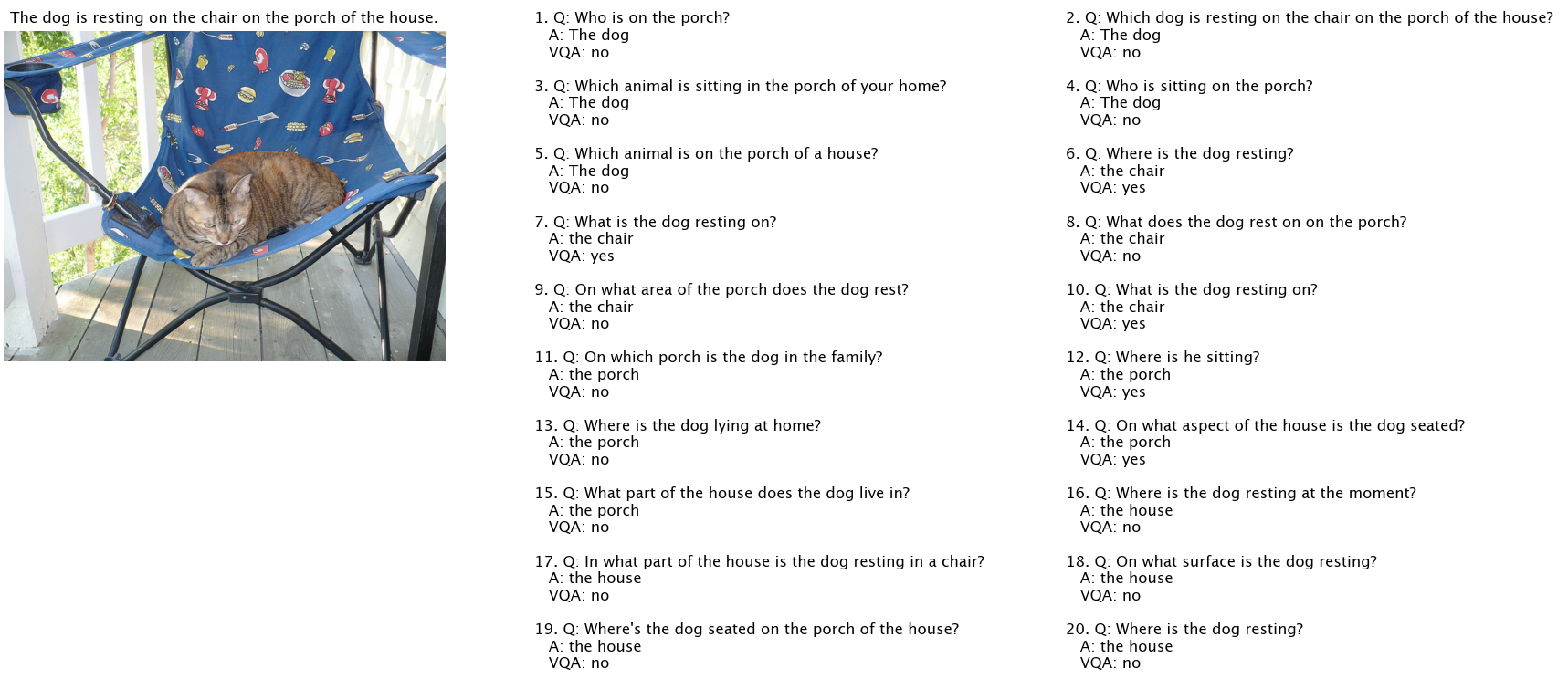This repository contains the code and instructions to reproduce the results of the paper "What You See is What You Read? Improving Text-Image Alignment Evaluation". The paper introduces two methods for automatic image-text alignment evaluation: 1) a pipeline based on question generation and visual question answering models, and 2) an end-to-end classification approach.
First, clone the repository and install the required dependencies:
git clone https://github.com/yonatanbitton/wysiwyr.git
pip install -r requirements.txtThe SeeTRUE dataset is a comprehensive evaluation set for text-to-image and image-to-text generation tasks, with human judgments for whether a given text-image pair is semantically aligned. We will add more datasets from SeeTRUE (e.g., COCO-Con and PickaPic-Con) upon data release.
SeeTRUE is available in Huggingface datasets: https://huggingface.co/datasets/yonatanbitton/SeeTRUE
The dataset is also available in S3. You can download the CSV file and images using the following links:
- SeeTRUE dataset CSV: https://seetrue.s3.amazonaws.com/SeeTRUE_public.csv
- Images directory: https://seetrue.s3.amazonaws.com/images/
Example image:
To download the dataset and images, use a tool like AWS CLI:
aws s3 cp s3://seetrue/SeeTRUE_public.csv .
aws s3 sync s3://seetrue/images images/After downloading the dataset and images, you can proceed with the VQ2_ZeroShot and end-to-end classification methods as described below.
Some datasets are obtained from public resources. To process the Winoground dataset, accept their terms and download the jsonl files from the huggingface repository (https://huggingface.co/datasets/facebook/winoground/blob/main/data/examples.jsonl) and run datasets/process_winoground.py to convert it to the binary SeeTRUE format.
This method involves a pipeline based on question generation and visual question answering models. We use the Q-Squared repository (https://github.com/orhonovich/q-squared) to create the question-answering pairs. In this section, we demonstrate the steps to generate the QA pairs, evaluate them using a VQA model, and visualize the outputs.
Run the vq2_extract_qa_pairs.py script to generate question-answering pairs based on the given images and captions:
python vq2_zeroshot/vq2_extract_qa_pairs.pyThis script produces the vq2_qa_pairs.json file in the outputs directory.
Run the vq2_vqa_blip2.py script to evaluate the generated QA pairs using a VQA model:
python vq2_zeroshot/vq2_vqa_blip2.pyThis script produces the vq2_qa_pairs_vqa.json file in the outputs directory.
Run the vq2_show_outputs.py script to visualize the outputs of the previous steps:
python vq2_zeroshot/vq2_show_outputs.pyThe generated visualizations are saved in the images directory:
plot_apple.png: Visualization for theid_22_Colors_sd_2_1_2.pngimage and its caption.plot_cat.png: Visualization for theCOCO_val2014_000000067122.jpgimage and its caption.
The code is using the LAVIS library
The config is here.
First, train the model using the itm_vqa_blip2_train.py script:
python e2e_vnli/itm_vqa_blip2_train.pyThis script will train the model and save the trained weights.
After the model has been trained, you can test it using the itm_vqa_blip2_test.py script:
python e2e_vnli/itm_vqa_blip2_test.pyThis script will run the model on the test set and output the results.
To be updated soon.
This project is licensed under the Apache 2 License - see the LICENSE file for details.

